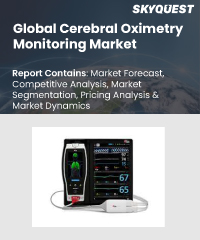
Report ID: SQMIG35A2364

Report ID:
SQMIG35A2364 |
Region:
Global |
Published Date: December, 2024
Pages:
157
|
Tables:
62 |
Figures:
75
Cerebral Oximetry Monitoring Market size was valued at USD 217.24 Billion in 2023 and is poised to grow from USD 232.88 Billion in 2024 to USD 406.15 Billion by 2032, growing at a CAGR of 7.2% during the forecast period (2025-2032).
Cerebral oximetry monitoring involves the use of non-invasive technology to assess the oxygenation status of the brain in real-time. This market analysis offers key information on market size, trends, competitive landscape, and growth opportunities within the sector. The purpose of the global cerebral oximetry monitoring market is to improve patient care and outcomes by providing healthcare professionals with crucial information about cerebral oxygenation. Monitoring cerebral oxygen saturation levels is vital in various clinical scenarios, such as cardiac surgeries, critical care units, and neonatal care, as it helps detect and manage cerebral desaturation, optimize cerebral perfusion, and prevent potential neurological complications. The goal is to ensure adequate oxygen supply to the brain, promoting patient safety and reducing the risk of adverse events.
A driving factor for the global cerebral oximetry monitoring market is the increasing recognition of the importance of cerebral oxygenation monitoring in healthcare settings. Healthcare providers and regulatory bodies are placing greater emphasis on patient safety and optimizing perioperative care. Cerebral oximetry monitoring offers a valuable tool to assess and manage cerebral oxygenation, enabling healthcare professionals to make informed decisions and interventions to safeguard the well-being of patients during critical procedures. There are restraining factors and challenges that impact the market. One key restraining factor is the cost associated with cerebral oximetry monitoring devices. Advanced monitoring systems require specialized sensors and technology, contributing to higher prices. This cost factor can limit the affordability and accessibility of these devices, particularly in resource-constrained healthcare settings. Additionally, the lack of comprehensive reimbursement coverage for cerebral oximetry procedures may hinder market growth, as healthcare providers face challenges in securing reimbursement for these monitoring services.
Challenges in the market include the need for standardized protocols and guidelines for cerebral oximetry monitoring. While the technology holds immense potential, there is a lack of uniformity in terms of protocols and interpretation of cerebral oxygen saturation values. Establishing clear guidelines and standards would help ensure consistent and effective use of cerebral oximetry monitoring across healthcare facilities, optimizing patient care and outcomes. Despite these challenges, there are significant opportunities in the global cerebral oximetry monitoring market. The increasing prevalence of cardiovascular diseases, advancements in monitoring technology, and the growing adoption of non-invasive monitoring techniques present avenues for market growth. Moreover, the expansion of healthcare infrastructure, particularly in emerging markets, provides opportunities for the adoption of cerebral oximetry monitoring devices.
US Prefabricated Building System Market is poised to grow at a sustainable CAGR for the next forecast year.
Our industry expert will work with you to provide you with customized data in a short amount of time.
REQUEST FREE CUSTOMIZATIONWant to customize this report? This report can be personalized according to your needs. Our analysts and industry experts will work directly with you to understand your requirements and provide you with customized data in a short amount of time. We offer $1000 worth of FREE customization at the time of purchase.

Report ID: SQMIG35A2364